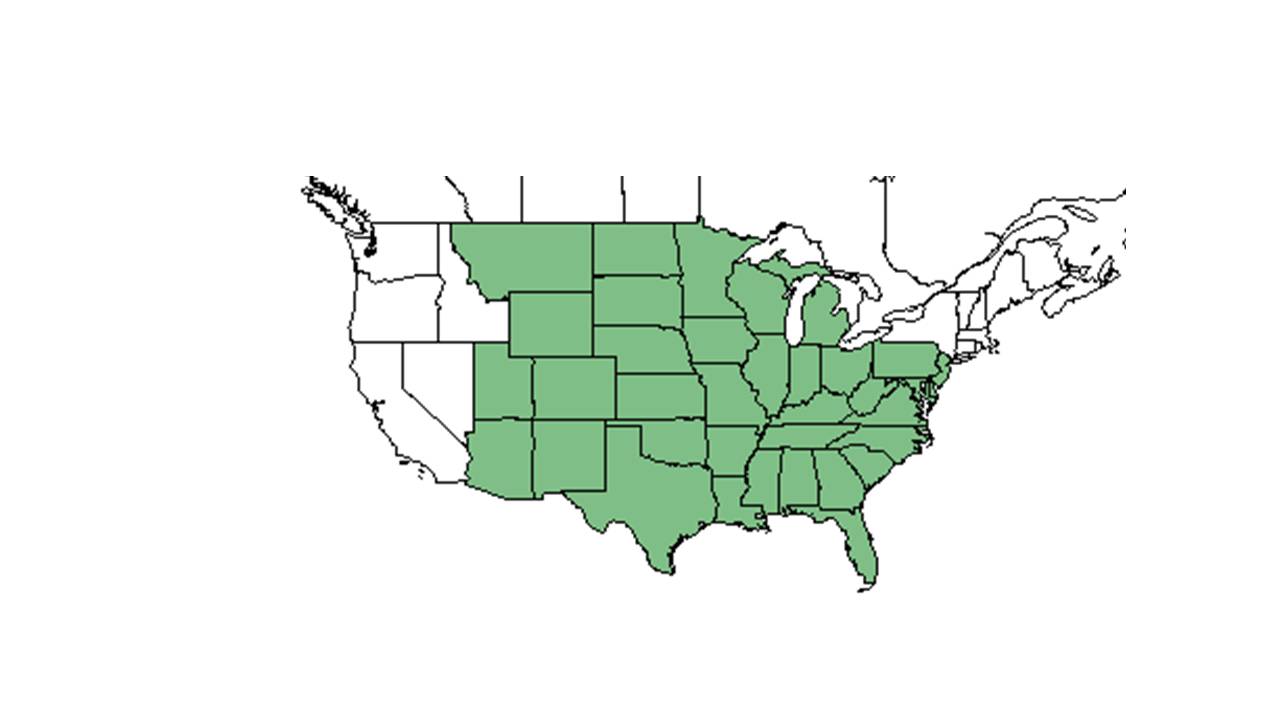Difference between revisions of "Brickellia eupatorioides"
(→Description) |
|||
| Line 19: | Line 19: | ||
==Description== | ==Description== | ||
<!-- Basic life history facts such as annual/perrenial, monoecious/dioecious, root morphology, seed type, etc. --> | <!-- Basic life history facts such as annual/perrenial, monoecious/dioecious, root morphology, seed type, etc. --> | ||
| + | Common Name: false boneset | ||
| + | |||
==Distribution== | ==Distribution== | ||
==Ecology== | ==Ecology== | ||
Revision as of 15:58, 2 July 2015
| Brickellia eupatorioides | |
|---|---|
Error creating thumbnail: Unable to save thumbnail to destination
| |
| Scientific classification | |
| Kingdom: | Plantae |
| Division: | Magnoliophyta - Flowering plants |
| Class: | Magnoliopsida - Dicotyledons |
| Order: | Asterales |
| Family: | Asteraceae ⁄ Compositae |
| Genus: | Brickellia |
| Species: | B. eupatorioides |
| Binomial name | |
| Brickellia eupatorioides (L.) Shinners | |

| |
| Natural range of Brickellia eupatorioides from USDA NRCS Plants Database. | |
Contents
[hide]Description
Common Name: false boneset
Distribution
Ecology
Mycorrhizal relationships seemed to yield significantly higher phosphorous levels.[1]
Habitat
It is common in grassland communities.[2] It is especially dominant in the tallgrass prairie.[3] It is also found in loblolly pine communities.[4]
Phenology
Seed dispersal
Seed bank and germination
It germinates well at 18-22 degrees Celsius.[1]
Fire ecology
It is fire-tolerant.[2]
Pollination
Use by animals
Diseases and parasites
Conservation and Management
Cultivation and restoration
Photo Gallery
References and notes
- ↑ Jump up to: 1.0 1.1 Kula, A. A. R., D. C. Hartnett, et al. (2005). "Effects of mycorrhizal symbiosis on tallgrass prairie plant-herbivore interactions." Ecology Letters 8: 61-69.
- ↑ Jump up to: 2.0 2.1 Bahm, M. A., T. G. Barnes, et al. (2011). "Herbicide and fire effects on smooth brome (Bromus inermis) and Kentucky bluegrass (Poa pratensis) in invaded prairie remnants." Invasive Plant Science and Management 4: 189-197.
- Jump up ↑ Towne 2002 cited by Kula et al 2005.More citation needed.
- Jump up ↑ Miller, J. H. and K. V. Miller (1999). Forest plants of the southeast, and their wildlife uses Champaign, IL, Southern Weed Science Society.